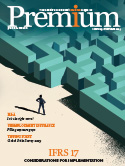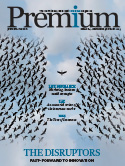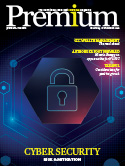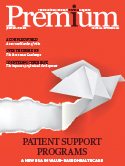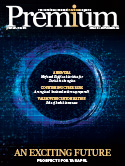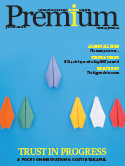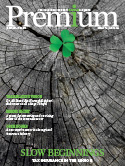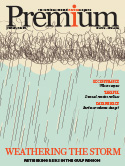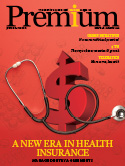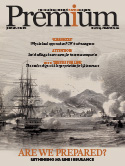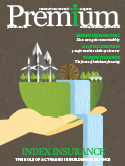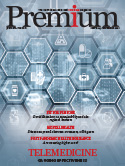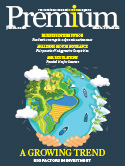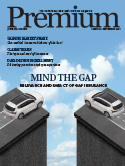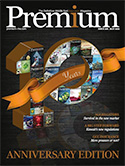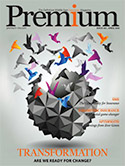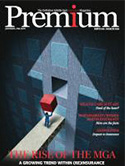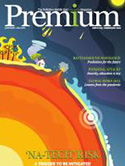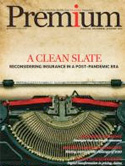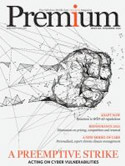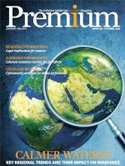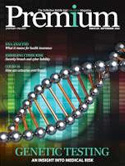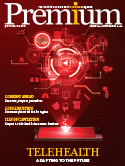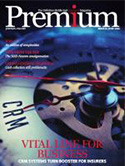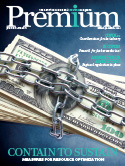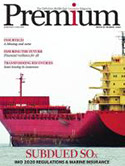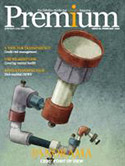The rise of the MGA

Peter Hodgins explores the growing trend of MGAs being set up and taking large share of underwriting within the (re)insurance landscape.
Since its establishment in 2004 the Dubai International Financial Centre (DIFC) has established itself as a hub for reinsurance business in the Middle East, Africa and South-East Asia. It is reported that the gross written premiums underwritten in the Centre grew by 17.4 percent in 2019 to nearly USD2 billion. There are over 100 insurance and reinsurance sector entities established in the DIFC utilising a range of operating models to conduct reinsurance business in and from the DIFC. This includes a number of managing general agents (MGAs) such as Antarah Limited, elseco Limited and Hamilton Managing General Agency (Dubai) Limited.
In this article we consider the role of MGAs and the opportunities that they afford to reinsurers seeking to expand their portfolio of business in the region.
What is an MGA?
The International Risk Management Institute defines an MGA as a specialised insurance agent or broker that is vested with underwriting authority from a (re)insurer. It is, in effect, a form of outsourcing involving a principal/agent relationship between a (re)insurer and a non-affiliated entity. For these purposes the (re)insurer will enter into a binding authority agreement with the MGA which, if properly drafted, should clearly delineate the scope of the authority of the MGA and provide guidelines as to the manner in which the MGA is to underwrite business on behalf of the (re)insurer and appropriate mechanisms for the (re)insurer’s oversight of the MGA’s activities.
Options for Participation
It is permissible for reinsurers to underwrite reinsurance business in most Middle Eastern jurisdictions on a cross-border basis.[1] However, the ability to develop specialist knowledge and proximity to the local markets has led to the emergence of the DIFC as a regional hub. For reinsurers wishing to establish operations in the DIFC there are a number of options, including:
- The incorporation of a subsidiary to operate a reinsurance company that is licensed by the Dubai Financial Services Authority (the DFSA) to conduct the regulated financial services of “Effecting Contracts of Insurance” and “Carrying out Contracts of Insurance”;
- The establishment of a branch of a foreign reinsurance company in the DIFC (which will have the same licenses as a subsidiary); or
- The establishment of a wholly-owned underwriting vehicle which will be licensed to conduct the regulated financial service of “Insurance Management”. Unlike a subsidiary or branch, such a vehicle would act as an underwriting agent for one or more entities in its group and would not be a risk carrier.
Needless to say, the decision to establish an operation in the DIFC is a significant investment for a foreign reinsurer. The incorporation and licensing process typically takes five to six months to complete and it is necessary to have a local office in the DIFC and to have adequate levels of human resources.
As an alternative, we have seen a number of independent MGAs established in the DIFC that underwrite business on behalf of foreign reinsurers pursuant to binding authorities. This can offer a practical and cost-effective option for reinsurers wishing to build a portfolio of business in the region.
Advantages and Disadvantages
There are a number of benefits of the MGA model:
- Timing: Appointing an MGA that is already established and licensed in the DIFC is primarily a matter of agreeing the terms and conditions of a binding authority. As such it can implemented relatively quickly compared to setting up a new entity. .
- Cost: There is also a cost-saving in not having to establish, licensed and capitalise a new entity in the DIFC. This allows financial resources to be concentrated in the home-market of the reinsurer or deployed elsewhere.
- Knowledge: The appointment of an MGA may enable the reinsurer to leverage the specialist underwriting capabilities and/or regional contacts of the MGAs underwriting team. Such capabilities may not be readily available to the reinsurer and it avoids the need to recruit staff for a new entity.
- Flexibility: MGAs are permitted to underwrite business on behalf of more than one reinsurer, who may be established in the DIFC or elsewhere, and across multiple lines of business. An MGA can be attractive to brokers and cedants where it has multiple binding authorities from different reinsurers and can potentially commit to significant lines on risks.
However, as with any other form of outsourcing, there can be risks associated with dealing with MGAs. Certainly, experience elsewhere in the world, particularly in the 1970s and 1980s has shown that there can be over-dependency on MGAs where they are used to underwrite lines of business in which the reinsurer has limited experience. Likewise, it is important to ensure that the interests of the MGA and the reinsurer are aligned so as to avoid business being written to generate premium volume and without adequate consideration to the quality of the business.
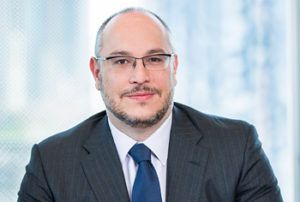
Peter Hodgins, corporate insurance partner, Clyde & Co Dubai
To a substantial degree some of the historical challenges of dealing with MGAs have been mitigated by increased regulation of their activities. Certainly, MGAs operating in the DIFC are subject to rigorous scrutiny by the DFSA and have substantive regulatory obligations to both their clients and the reinsurers on whose behalf they are operating.
The terms and conditions of the binding authority issued by the reinsurer is also a significant consideration. There is substantial flexibility as to the range of activities that MGAs in the DIFC can undertake on behalf of the reinsurer, including binding coverage, underwriting a pricing business and settling claims. However, it is important that the binding authority clearly specify the scope of the authority of the MGA, the lines of business which may be underwritten and the underwriting and claims criteria to be applied, the services levels expected of the MGA and provide for appropriate oversight mechanisms.
Establishment and Licensing of MGAs
For those wishing to establish an MGA, it is sensible to take appropriate advice as to the establishment and licensing process and the ongoing legal and regulatory obligations of an MGA. The incorporation process is straight-forward and predictable. Normally the process will commence with an initial meeting with the DIFC Authority and the DFSA to discuss an applicant’s proposed business model and, if available, to consider a draft of its business plan. Following such a meeting an application is made to the DFSA for preliminary approval for the licensing of the new entity and the individuals who will fulfil the mandatory functions. The DFSA will review the regulatory business plan of an applicant, raise any issues on which clarification is required and interview the individuals who are proposed for the mandatory functions. Once preliminary approval is obtained, the new entity can be incorporated at the DIFC Registrar of Companies, premises leased and the capital paid into the new entity’s bank account. Following this step the DIFC will inspect the office of the new entity and issue its licence whereupon it may commence operations.
MGAs established in the DIFC are licensed by the Dubai Financial Services Authority (the DFSA) to conduct the regulated financial service of “Insurance Management.” Pursuant to this licence an MGA is permitted to:
- Perform underwriting and administrative functions on behalf of reinsurer for the purposes of enabling the reinsurer to effect or carry out contracts of reinsurance.
- Provide advice in relation to a contract of reinsurance.
- Arrange reinsurance / retrocessional coverage in respect of the business being underwritten.
MGAs are a ‘category 4’ vehicle for prudential purposes. This means that they are required to apply a variable capital model. This requires that MGAs must maintain at all times capital which exceeds the ‘Expenditure Based Capital Minimum’ being the equivalent of 6/52nd of its overheads (the two largest components of which are typically office rental and staff salaries). This figure is increased to 18/52nd if the MGA handles insurance monies.
MGAs are also required to maintain professional indemnity insurance in order to mitigate the risks to which their business operations are exposed. Such coverage is required to appropriate to the “size, nature, complexity and risk profile” of the MGA’s business. The DFSA has indicated that a review of the adequacy of such insurances will be a priority in 2021.
Like other authorised firms in the DIFC, MGAs are required to maintain adequate resources, including human resources. This includes having individuals appointed that satisfy the fit and proper criteria of the DFSA to conduct the activities of a Senior Executive Officer, Finance Officer, Money Laundering and Reporting Officer. The directors of an entity incorporated in the DIFC will also need to satisfy these criteria.
Conclusion
The MGA community in the DIFC will continue to develop and we anticipate that such entities will be responsible for underwriting an increasing proportion of the total reinsurance premium in the Centre. Given the potential advantages of MGAs we anticipate that there will be new players in the sector established in the coming months and years.
[1] There are specific requirements in some jurisdictions such as the Kingdom of Saudi Arabia which require a certain proportion of reinsurance premiums to be ceded locally and information to be provided to the insurance regulator in relation to reinsurance treaties placed overseas.








